Home > Auctions > 5 - 9 December 2023
Ancient Art, Antiquities, Natural History & Coins
Auction Highlights:
Acquired in the 1980s-1990s.
Ex an important central London gallery, London W1.
Cf. Murasheva, V.V., Old Russian belt ornaments, Moscow, 2000, pl.61, for similar types.
During the medieval period, belts had a range of functions. They girdled the clothes and enabled suspension of small items such as knives, whetstones, purses and leather bags. The decoration of the belt depended on the social status of its owner: peasants wore woven and simple leather straps, whereas feudal lords, prominent warriors, and princes wore golden belts, which were passed down through the generations.
Ex private collection of Mr M.B., Mainz, Germany, since the 1980s.
Acquired from the above, 2004.
Cf. Hjardar, K. and Vike, V., Vikings at war, Oxford-Philadelphia, 2016, pp.175-180.
The spearheads of type N were a minor group in the Viking spearheads, found throughout the whole of the 10th century A.D. They make up circa 10% of the Viking Age spears.
Dutch art market.
Private collection of K.S., Cologne, Germany, acquired 1996.
Cf. Tasic, N., Scordisci and the native population in the Middle Danube Region, Belgrade, 1992, nos.84-90, and especially no.88, for similar specimen in iron; Various, I Daci, Catalogue of the exhibition, Milan, 1997, cat.113.
One of the military insignia of a Celtic warrior was the war-knife, usually between 33 and 35 cm long. For example, in the collection of Celtic military equipment from Galish-Lovachka, the archaeologists have found a short sword with an X-shaped handle (l = 41 cm), two middle La Tène swords (72.5 and 75 cm long), 12 large curved knives, 27 spearheads, two javelin heads, 14 arrowheads, and nine iron chain belts for hanging a sword. The war-knife was also used for hunting, as a spare weapon, or to cut the throat of an enemy in a surprise attack.
From the private collection of a London gentleman, from his grandfather's collection formed before the early 1970s.
Cf. Žákovský, P., ‘Caltrop. Contribution to the knowledge of one neglected weapon’ in Studia Minora Facultatis Philosophicae Universitatis Brunensis, M 12-13, 2007-2008, pp.115-132, fig.9, no.4 (type 3 of Žákovský classification).
Private collection formed in the 1990s.
Acquired from a central London gallery.
Property of an Essex gentleman.
Ex private collection of Mr M.B., Mainz, Germany, since the 1980s.
Acquired from the above, 2004.
This lot has been checked against the Interpol Database of stolen works of art and is accompanied by search certificate number no.11940-210918.
Cf. similar swords in Zablocki, W., Cięcia prawdziwą szablą, (Cuts with a real sabre), Warszawa, 1989, nos.43, p.200, 44, no.202, for the blade; nos.100,102-103, for the guard and the pommel, pp.314ff.
This sabre blade belongs to no. IIa of Zablocki's classification with a blade of variable curvature and double-edged pronounced yelmen. These sabres were used in the 17th and in the first half of 18th century A.D.
Ex P.A., Hertfordshire, UK, specialist collection of Greek art, 1980-1990s.
Cf. Khorasani, M.M., Arms and Armour from Iran. The Bronze Age to the End of the Qajar Period, Tübingen, 2006, s. cat 12, for type.
These short daggers and dirks were mainly cast in one piece, and especially the penannular rib was cast on at the same time with handle and blade according to Medvedskaya. On the contrary, Moorey said that the penannular rib was later cast on the dirk, possibly to strengthen a weak point at the junction of hilt and blade.
Acquired 1980-2015.
Ex Abelita family collection.
Khorasani, M.M., Arms and Armour from Iran. The Bronze Age to the End of the Qajar Period, Tübingen, 2006, item 8.
This type of dirk belongs to the type III of Medvedskaya classification and is very common among daggers and dirks attributed to Luristan. The same scholar suggests that the dating for the whole series of type III daggers is an inscription on a type III dirk with the name of Marduk Nadin Ahhe (1100-1083 B.C.).
Acquired from Bolk Antique Arms, Netherlands, 2016.
Ex Kusmirek Collection, UK.
Accompanied by an original Bolk invoice.
See Flayderman, N., Guide to Antique American Firearms, 9th edition, 2007, pp.220-221, for details.
Sold as an exempt item under Section 58 (2) of the Firearms Act, 1968, to be held as a curiosity or ornament. No license required but buyer must be over 18 years of age. Overseas bidders should note that, due to UK regulations governing export of all firearms, overseas buyers will need to make arrangements for shipping this lot out of the UK directly, by air freight, with a specialist company or agent.
From London art market, acquired in 1990s.
Ex C.J. Martin, London, UK.
Accompanied by a copy of the Spanish export licence.
See Khorasani, M.M., Arms and Armour from Iran. The Bronze Age to the End of the Qajar Period, Tübingen, 2006, figures 463, 468, for some of these types.
These types of arrowheads were commonly used in Anatolia and Mesopotamia from the 2nd millennium B.C., but it appears that their employment began earlier in this area, where types like these occur alongside the non-barbed, predominantly ribbed and tanged types.
Acquired 1980-2015.
Ex Abelita family collection.
Cf. Khorasani, M.M., Arms and Armour from Iran. The Bronze Age to the End of the Qajar Period, Tübingen, 2006, s. cat 280, for type; Christies, Axel Guttmann collection of Ancient Arms and Armour, Part 2, London, South Kensington, 28th April 2004, lot 40.
The weapon belongs to the type 1 of the Khorasani spearhead classification, mainly from Marlik or Amlash areas. Similar pieces have been dated by Stutzinger to 1200-1100 B.C., but the period of use is attested to at least until 1000 B.C.
Acquired 1980-2015.
Ex Abelita family collection.
Accompanied by an academic paper by military specialist Dr Raffaele D'Amato, dated 15 July 2019 and titled 'Eastern Roman Empire - Greek Fire Bomb or Hand Grenade (μεσαίον kακάβιον) 9th-11th century AD'.
Cf. Arendt, W. I., Granaten des 13-14. Jahrhunderts, die an der Wolga gefunden sind, Zeitschrift fur Historische Waffen-und Kostumkunde, 11 (1926-8), p.42; cf. Arendt, W., Die Spharisch-konischen Gefasse aus Gebranntem Ton, ibid; cf. Ayalon, D., Gunpowder and Firearms in the Mamluk Kingdom, London, 1956, p.16.
Apart from the use of siphons or manual flame-throwers called cheirosiphona, special corps of Roman soldiers employed terracotta grenades, in the form of small jars, abundantly evidenced in archaeological excavations. Such were the γανωτα, vessels (sometimes also of bronze) used for Greek fire. They were called μεσαία kακαβιά or κυτροκακάβια where the former had a bulbous shape and the latter a more cylindrical form.
793 - 804 of 2409 LOTS

.jpg)


.jpg)

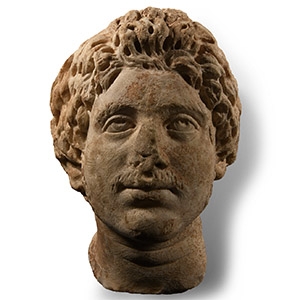
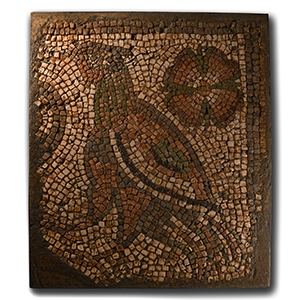
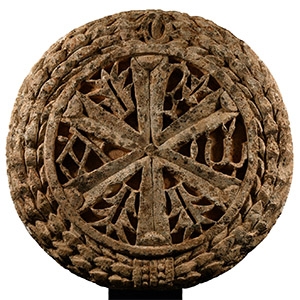


.jpg)


.jpg)
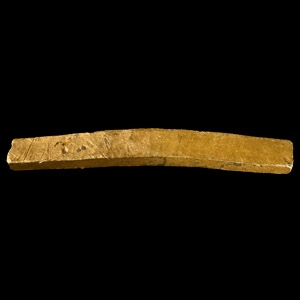
.jpg)
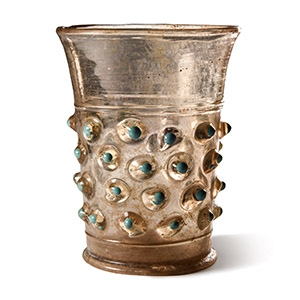

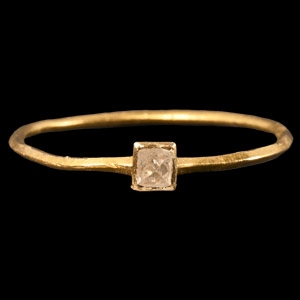


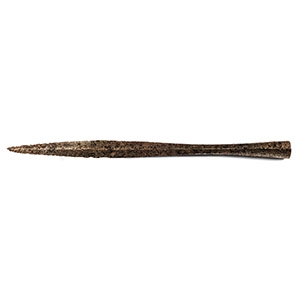
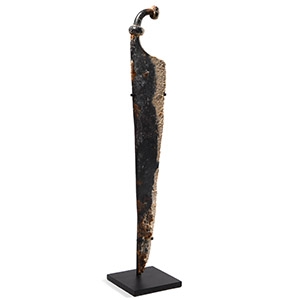
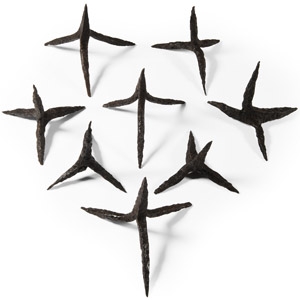
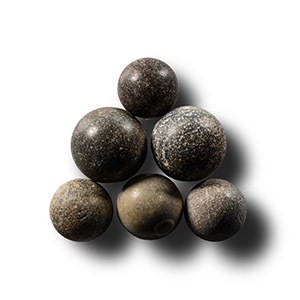


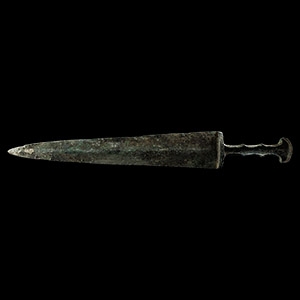
.jpg)
.jpg)





